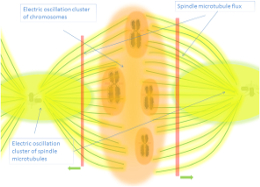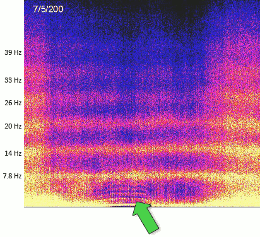

Electromagnetism & Water - Coherence Domains
Water is one basic life's brick that transforms into coherent excitations the incoming energy
Water, a fundamental component of life, exhibits unique electromagnetic and structural properties through the formation of coherence domains (CDs) and water clusters. These domains interact with electromagnetic fields (EMFs), forming resonant cavities that play critical roles in energy transfer, molecular organization, and cellular regulation. ...
This section synthesizes findings on water coherence, structured water, and their implications for biological systems, emphasizing the interplay between electromagnetic fields, coherent domains, and trapped molecules.
Water's dynamic structure extends beyond its chemical composition, encompassing phases and domains influenced by hydrogen bonding and electromagnetic interactions. Coherence domains (CDs), proposed by Del Giudice, Preparata, and Vitiello, represent clusters of water molecules oscillating coherently within electromagnetic fields. These domains form the basis of water's extraordinary properties, underpinning its role in biological coherence and systemic regulation. This section explores the mechanisms of CD formation, their interaction with electromagnetic fields, and their implications for biology.Formation and Properties of Coherence Domains:
Two-Phase System:
Water exists in a dual-phase system comprising coherent (structured) and incoherent (unstructured) phases (Del Giudice et al., 1988; Yinnon, 2017).
Coherent domains form in bulk water under electromagnetic influences, oscillating between ground and excited states.
Characteristics of Coherence Domains:
CDs consist of approximately 5.5 million molecules and occupy volumes of about 100 nm, resonating with specific EM frequencies (Yinnon & Liu, 2015).
These domains trap electromagnetic radiation, generating energy-rich environments conducive to biochemical reactions and molecular organization.
Water Clusters and Biological Implications:
Cluster Formation and Dynamics:
Hydrogen bonding enables water molecules to form clusters ranging from dimers to complex hexamers, influencing the stability and functionality of coherent domains (Ignatov et al., 2024).
Stable clusters, such as hexamers, interact with dissolved ions and molecules, forming dynamic structures essential for cellular activity.
Role in Genetic Processes:
Structured water surrounds DNA, organizing into chiral superstructures that influence genetic processes and molecular signaling (McDermott et al., 2017).
Interaction with Electromagnetic Fields:
Oscillation and Resonance:
CDs oscillate in phase with external EM fields, transforming incoherent energy into coherent high-frequency signals utilized by cells (Martseniuk, 2017).
Ion Cyclotron Resonance (ICR) studies reveal specific frequencies, such as the Schumann Resonance, inducing coherence in biological water (Pazur, 2018).
Energy Transfer and Storage:
CDs act as resonant cavities, storing and transferring electromagnetic energy to drive cellular functions and enzymatic reactions.
Biological Functions of Coherent Domains:
Bioelectric Regulation:
CDs modulate bioelectric gradients, influencing processes like cell signaling, mitosis, and tissue repair.
Structured water within cells enhances conductivity and information transfer through solitonic mechanisms.
Developmental and Regenerative Roles:
CDs generate and align bioelectric fields during developmental and regenerative processes, guiding cellular organization (Johansson & Sukhotskya, 2016).
Water's coherent properties also contribute to the stabilization of bioelectric signaling networks.
Experimental Evidence and Techniques:
Imaging Techniques:
Advanced methods like Transmission Electron Microscopy (TEM) and Atomic Force Microscopy (AFM) visualize CDs and supramolecular water clusters in real-time (Grasso et al., 2018).
Spectroscopy:
Nuclear Magnetic Resonance (NMR) and Fourier Transform Infrared (FTIR) spectroscopy reveal characteristic frequencies associated with water structuring and coherence (Ignatov et al., 2024).
Discussion: Coherence domains in water provide a robust framework for understanding its bioenergetic and regulatory roles. By coupling with electromagnetic fields, CDs facilitate the organization, energy dynamics, and coherence essential for life. These insights offer pathways for therapeutic applications, including EM field modulation to enhance biological function and healing.
Conclusion: The interplay between water coherence domains and electromagnetic fields underscores water's central role in biology. As a medium for energy transfer and molecular organization, coherent water bridges physics and biology, illuminating pathways for understanding life's complexity and developing innovative therapies.
Keywords: coherence domains, electromagnetic fields, structured water, water clusters, bioelectric regulation, cellular signaling, morphogenesis.
-Text generated by AI superficially, for more specific but also more surprising data check the tables below-Very related sections:
↑ text updated (AI generated): 23/12/2024
↓ tables updated (Human): 28/11/2024
Endogenous Fields & Mind
 EM & Water - Coherence Domains
EM & Water - Coherence Domains
.
.

























